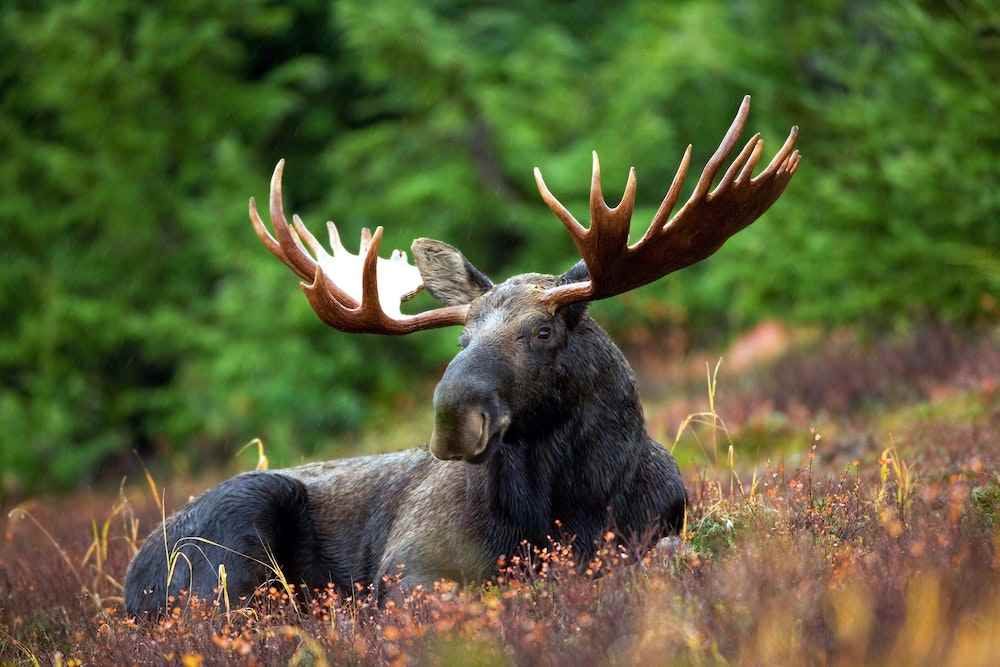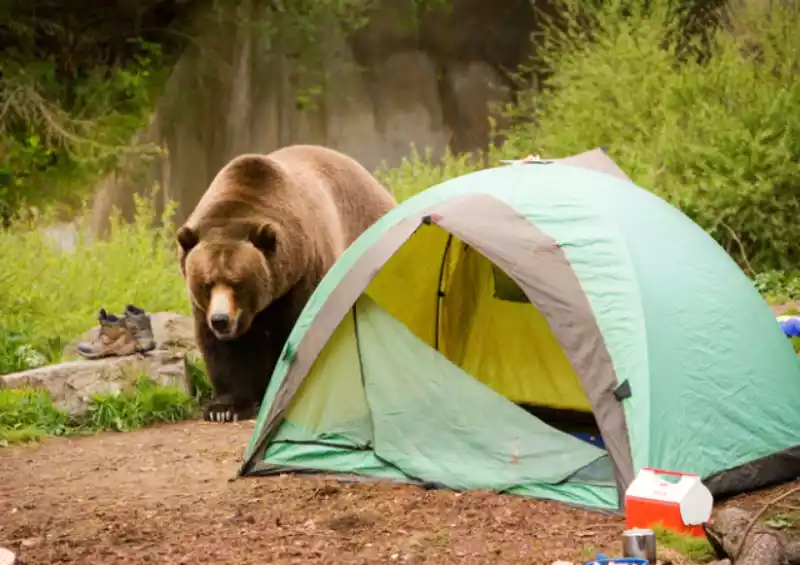Table of Contents

There’s something ethereal about capturing the untamed beauty of nature through the lens of a camera. The raw emotions, the vibrant colors, and the intricate details that make up wildlife can be a source of endless fascination. If you’re planning a camping trip and want to immortalize your encounters with the wilderness, this blog post will guide you on your journey to becoming a skilled wildlife photographer..
1. Research and Preparation: Before embarking on your camping trip, do thorough research on the wildlife in the area you’ll be visiting. Learn about their habits, habitats, and behaviors. This knowledge will help you anticipate their movements and increase your chances of capturing unique shots.
2. Invest in the Right Gear: While it’s not necessary to have top-of-the-line equipment, investing in a good camera and lens will greatly enhance your wildlife photography. Look for a camera with a fast autofocus system and a telephoto lens with a long focal length to capture distant subjects. Additionally, consider purchasing a tripod to stabilize your shots.
3. Understand Lighting: Lighting is crucial in photography, and photographing wildlife is no exception. Learn to identify and work with different lighting conditions, such as golden hour (the hour after sunrise and before sunset), which provides warm and soft lighting. Experiment with backlighting, sidelighting, and front lighting to add depth and drama to your images.
4. Patience and Persistence: Photographing wildlife requires patience and persistence. Be prepared to spend long hours waiting for the perfect shot. Remember, nature operates on its own timeline, and you might have to wait for the right moment to capture that elusive animal or the perfect behavior.
5. Be Respectful and Ethical: When photographing wildlife, it’s essential to prioritize the well-being and safety of the animals. Maintain a safe distance and avoid disturbing their natural behavior. Never bait or feed wildlife for the sake of a photo. Respecting their habitat and boundaries is key to being an ethical wildlife photographer.

6. Composition and Framing: Pay attention to the composition of your shots. Use the rule of thirds, leading lines, and framing techniques to create visually pleasing and impactful images. Experiment with different angles and perspectives to capture unique shots that tell a story.
7. Capture the Moment: Photographing wildlife is about capturing moments and emotions. Learn to anticipate and be ready for those fleeting moments when animals exhibit interesting behaviors or interactions. Be patient, observe, and wait for the perfect opportunity to press the shutter.
8. Post-Processing: Once you’ve captured your wildlife images, take time to post-process them to enhance their visual impact. Use software like Adobe Lightroom or Photoshop to adjust exposure, colors, and sharpness. However, strive for a natural look and avoid excessive editing that alters the reality of the scene.
9. Learn from Others: Join photography forums, follow wildlife photographers on social media, and attend workshops or seminars to learn from experienced photographers. Engage in constructive critiqueand feedback from other photographers to improve your skills. Experiment with different techniques and equipment to find your own style. Practice regularly, whether it’s in your backyard, local parks, or on dedicated photography trips. Be patient and observant, as capturing the perfect shot often requires waiting for the right moment. Finally, always respect and prioritize the welfare of the animals you photograph by maintaining a safe distance and not disturbing their natural behavior.
Introduction

Importance of Wildlife Photography during Camping Trips
Photographing wildlife offers an opportunity to connect more deeply with the environment during camping trips. It allows us to appreciate the complexity and beauty of flora and fauna in their natural habitats. Moreover, it serves as a powerful tool for promoting conservation and inspiring others to respect and protect our natural world.
Understanding the Basics of Wildlife Photography
Before delving into the technical aspects of photographing wildlife it’s important to understand some fundamentals. One key aspect is patience. Wildlife doesn’t operate on our schedule, so it’s crucial to be patient when waiting for the perfect shot. Additionally, one must develop a keen sense of observation to anticipate animal behavior and capture compelling images.
Choosing the Right Camera for Wildlife Photography
DSLRs
Digital Single-Lens Reflex (DSLR) cameras have long been a popular choice for photographers due to their excellent image quality and versatility. They offer a wide range of interchangeable lenses, which can be handy when photographing wildlife from different distances. However, they tend to be bulkier and heavier than other camera types, which may be a consideration for backpacking campers.
Mirrorless Cameras
Mirrorless cameras are becoming increasingly popular thanks to their compact sizes and high performance. They offer similar image quality to DSLRs but in a smaller package, making them ideal for travellers. Additionally, they have fewer moving parts, which reduces the risk of mechanical failure in the field.
Compact Cameras
For those who value portability above all else, compact cameras can be a great choice. Though they lack the interchangeable lenses of DSLRs and mirrorless cameras, many modern compact cameras offer excellent image quality and a good range of zoom. This makes them suitable for casual photographers who want a lightweight and easy-to-carry option.
Conclusion on Selecting the Best Camera
The best camera for photographing wildlife ultimately depends on your specific needs and preferences. Consider factors such as weight, size, image quality, lens versatility, and budget when making your decision. Remember, the best camera is the one you feel comfortable using and have with you when the perfect moment arises.
Essential Equipment for Photographing Wildlife
Lenses
Apart from the camera body, lenses are arguably the most crucial equipment in photographing wildlife. Telephoto lenses allow you to capture close-ups of animals without disturbing them, while wide-angle lenses are excellent for capturing landscapes and larger scenes. A versatile zoom lens can provide a balance between these options.
Tripods
A sturdy tripod can help stabilize your camera, particularly when using long telephoto lenses. It’s worth investing in a lightweight yet robust tripod, especially for camping trips where you may need to carry your gear over long distances.
Camera Bags
A good camera bag is essential for protecting your equipment from the elements. Look for bags with padded compartments to protect your gear from impacts and consider waterproof options for added protection.
Other Essential Accessories
Other useful accessories include spare batteries, memory cards, lens cleaning kits, and weather covers. A bean bag can also be handy for stabilizing your camera when a tripod isn’t practical.
Tips and Techniques for Capturing Stunning Wildlife Shots
Here’s some wildlife photography tips from experts to help you get started:
Patience and Timing

Photographing wildlife often requires patience and timing. Animals are unpredictable, and capturing the perfect shot often involves waiting for the right moment. This could mean waiting for the golden hour light, an animal’s gaze, or a particular behavior.
The Rule of Thirds
The rule of thirds is a basic composition technique that can greatly improve your photos. The idea is to divide the image into nine equal parts and place the subject along these lines or at their intersections. This often results in more dynamic and balanced compositions than centering the subject.
Focus on the Eyes
When photographing animals, always try to focus on the eyes. Eyes are windows to the soul and can convey a lot of emotion, making your images more engaging and impactful.
Use of Natural Light
Natural light plays a crucial role in photographing wildlife. The quality of light can dramatically affect the mood and feel of your images. Early morning and late afternoon, known as the golden hours, often provide the most flattering light.
How to Approach Wildlife Safely and Respectfully

Understanding Animal Behavior
Knowledge of animal behavior can help you get better shots and avoid disturbing wildlife. Research the species you intend to photograph to understand their habits, behaviors, and signs of distress. Always respect their space and never force an encounter.
Keeping a Safe Distance
It’s essential to keep a safe distance from wildlife for their safety and yours. Telephoto lenses allow you to capture close-up shots without getting too close. Remember, the goal is to observe and document nature, not to interfere with it.
Post-Processing Your Wildlife Photographs
Basics of Photo Editing
Post-processing is a vital part of digital photography. Simple adjustments like cropping, exposure correction, and color balancing can significantly enhance your images. However, try to keep edits minimal to maintain the natural beauty of the wildlife.
Useful Software for Post-Processing
Several software options are available for post-processing, including Adobe Lightroom and Photoshop, Capture One, and DxO PhotoLab. These programs offer a range of tools for enhancing your photos, from basic adjustments to advanced effects.
Recap of Key Points

We’ve covered a lot of ground in this guide, from choosing the right camera and essential equipment for wildlife photography to understanding basic composition rules and respecting wildlife. Remember, patience, observation, and a deep respect for nature are just as important as the technical aspects of photography.when it comes to wildlife photography. Here are the key points to recap:
1. Choose the Right Camera and Equipment: Invest in a camera with a good autofocus system and a long lens to capture distant subjects. Additional equipment like tripods, teleconverters, and bean bags can also be useful.
2. Understand Basic Composition Rules: Follow the rule of thirds, consider the background and foreground, use leading lines, and experiment with different angles to create visually pleasing images.
3. Respect Wildlife: Avoid disturbing or harming animals for the sake of a photograph. Keep a safe distance, observe their behavior, and never bait or feed them.
4. Practice Patience and Observation: Photographing wildlife requires patience and the ability to anticipate moments. Spend time observing the animals’ habits and patterns to increase your chances of capturing unique shots.
5. Learn about Animal Behavior: Understanding animal behavior will help you predict their movements and capture more interesting shots. Research and study the species you plan to photograph.
6. Use Natural Light to Your Advantage: Utilize the golden hours (early morning and late afternoon) for soft, warm lighting. Be mindful of harsh midday light and make use of diffusers or reflectors if needed.
7. Experiment with Different Perspectives: Try different angles, heights, and distances to add variety to your photographs. Get down to eye level with the animals for a more intimate and engaging perspective.

8. Be Prepared for Changing Conditions: Wildlife photography often involves unpredictable weather and environmental conditions. Be prepared with appropriate clothing, protective gear, and backup equipment.
9. Post-Processing: Edit your photos using software like Adobe Lightroom to enhance colors, sharpness, and overall quality. However, remember to maintain the authenticity of the image and avoid excessive editing.
10. Enjoy the Experience: Lastly, enjoy the process of photographing wildlife. It’s not just about the end result but also about immersing yourself in nature and appreciating the beauty of wildlife.
By following these key points, you’ll be well on your way to capturing stunning wildlife photographs while also respecting and appreciating the natural world.
Encouragement for Further Practice

Wildlife photography is a journey that involves continuous learning and practice. Each camping trip provides new opportunities to hone your skills and capture unique moments. So grab your gear, head into the wild, and start creating your own stunning wildlife images. Happy shooting!!! Remember, every shot you take, whether it’s perfect or not, is a step forward in your photography journey. Don’t be discouraged by any initial challenges you may face – instead, embrace them as opportunities to grow and improve.
In the world of wildlife photography, patience is key. Sometimes, you might have to wait for hours or even days to capture that one perfect shot. But remember, each moment spent in the wild is a chance to connect with nature and witness its wonders up close. Cherish these experiences and let them fuel your passion for photographing wildlife.
Don’t forget to keep exploring new camping locations and subjects for your photography. Nature is vast and diverse, offering endless possibilities for capturing captivating images. Venture into different habitats, from dense forests to wide-open savannahs, and discover the unique beauty that each holds.





Experiment with different techniques and settings to add variety and creativity to your shots. Play with lighting, composition, and framing to create visually stunning images that tell a story. Push the boundaries of your skills and don’t be afraid to try new things – you might just stumble upon a style that becomes your signature.
Lastly, never stop learning. Read books, follow blogs, and join communities of fellow wildlife photographers. Share your work, seek feedback, and learn from others’ experiences. Embrace constructive criticism as an opportunity to grow and refine your craft.
Remember, photographing wildlife is not just about capturing beautiful images; it’s also about conservation and raising awareness. Use your photographs to tell stories, evoke emotions, and inspire others to appreciate and protect the natural world.
So, pack your gear, immerse yourself in the wilderness, and let your passion guide you. With every click of the shutter, you are not only capturing moments but also preserving memories for generations to come. Happy shooting, and may your wildlife photography journey be filled with incredible wildlife encounters and breathtaking images. We hope that the tips for wildlife photography we covered will be helpful in you quest for that perfect shot.

FAQs
How do I get started photographing wildlife?
To get started photographing wildlife, follow these steps:
1. Invest in a quality camera and lens suitable for wildlife photography.
2. Research and learn about the behavior and habitat of the wildlife you want to photograph.
3. Practice patience and observation skills to anticipate wildlife movements.
4. Visit wildlife-rich locations such as national parks or wildlife sanctuaries.
5. Use camouflage or blend into the environment to avoid startling the animals.
6. Shoot during the golden hours (early morning or late afternoon) for softer lighting.
7. Use a fast shutter speed to freeze the motion of wildlife.
8. Experiment with different compositions and angles to capture unique shots.
9. Be respectful of wildlife and their environment; do not disturb or stress them.
10. Post-process your images to enhance colors and details, but maintain a natural look.
Remember, wildlife photography takes time and practice, so be patient and persistent to capture stunning wildlife images.
Do wildlife photographers make money?
Yes, wildlife photographers can make money through various avenues such as selling their photos to magazines, websites, or stock photo agencies, licensing their images for commercial use, selling prints or artwork, conducting workshops or photography tours, and working on assignment for clients. However, the income potential can vary depending on factors such as the photographer’s skills, reputation, market demand, and the ability to consistently produce high-quality and unique wildlife photographs.
Is it hard to be a wildlife photographer?
Being a wildlife photographer can be challenging due to various factors. It requires a combination of technical skills, patience, and a deep understanding of wildlife behavior. Additionally, wildlife photography often involves working in remote and unpredictable environments, dealing with harsh weather conditions, and sometimes even dangerous situations. It also requires investing in high-quality camera equipment and lenses specifically designed for capturing wildlife subjects. Overall, while it can be a rewarding and fulfilling profession, it is important to be prepared for the challenges that come with the territory.
What is unique about photographing wildlife?
Photographing wildlife allows capturing unique and captivating moments in nature.



